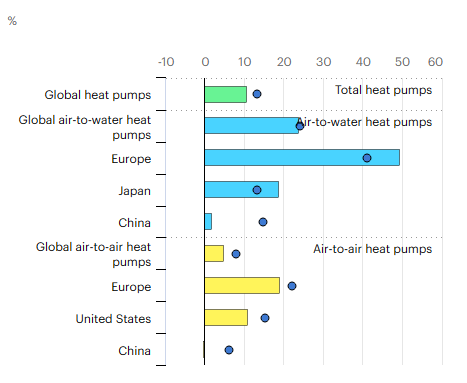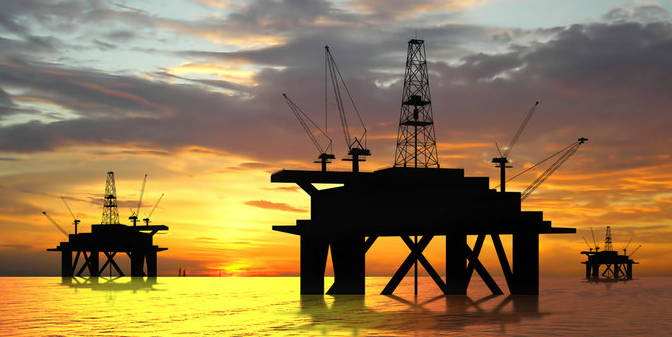Global Energy Transitions Stocktake
Greater efforts are particularly needed to stimulate demand for low-emission hydrogen, which still accounts for less than 1% of global hydrogen production and use, and will need to grow more than 100-fold by 2030 to meet the IEA’s Net Zero Emissions by 2050 Scenario.
Progress on electricity access has remained slow in 2023, hobbled by financial strains
The latest electricity access data confirms that for the first time in decades, the number of people without access to electricity in the world increased in 2022, rising to 760 million people. This setback was largely due to the combined impacts of the energy crisis and Covid-19 pandemic, and was concentrated in sub-Saharan Africa, home to 80% of those without access to electricity today.
Recent IEA data and analysis suggest that in 2023 progress on expanding has access has resumed but is still below pre-pandemic levels, with solar home systems playing a major role. This update comes in parallel with an update to all of IEA's latest data on Sustainable Development Goal 7: ensuring affordable, reliable, sustainable and modern energy to all.
Stronger international cooperation in high emissions sectors crucial to get on track for 1.5C climate goal
In the past year, only modest progress has been made in strengthening international collaboration in the areas where it is most needed. Progress has been made in expanding financial assistance to developing countries in some sectors, and in joint research and development initiatives. But much more progress is needed in aligning policies to create demand for clean technologies, and in establishing dialogue on trade in sectors where this is likely to be critical to the transition. In most sectors, participation in the leading initiatives for practical cooperation still falls short of a majority of the global market. The report argues that greater political commitment is needed to progress from softer forms of collaboration, such as sharing best practice, to harder forms such as alignment of standards and policies, which are more difficult but can yield greater gains in mobilising investment and accelerating deployment.
The clean energy economy is gaining ground, but greater efforts are needed
Rapid progress of key clean energy technologies shows the new energy economy is emerging faster than many think. The IEA’s Tracking Clean Energy Progress finds that solar PV, electric vehicles and lightning are fully on track in 2022 for their 2030 milestones laid out in the IEA’s Net Zero by 2050 Scenario. Progress can be observed across all of the 50-plus clean energy sectors and technologies evaluated, but accelerated policy support and investment are needed to quickly expand momentum across more countries and to all parts of the energy system to move the world closer to net zero emissions by 2050.
Clean energy investment in emerging markets and developing countries needs to grow steeply to reach SDGs and climate goals
Spending on clean energy in emerging market and developing economies outside of China has stagnated in recent years at around USD 250 billion per year. A seven-fold surge in clean energy investment is needed in these countries by 2035 to align with the Paris Agreement and sustainable development goals: less than 2% of the total would be enough to secure universal access to electricity & clean cooking fuels.
Governments have allocated USD 1.34 trillion to clean energy since the pandemic
In addition, policymakers have spent a further USD 900 billion in efforts to protect households and businesses from rising energy bills since autumn 2021. Only about 25% of these short-term affordability measures were targeted toward households most in need of support or businesses most exposed to the effects of high energy prices. Without better targeting, new affordability measures will further contribute to rising levels of government debt.
Clean energy investment reaches record high in 2022
The recovery from the Covid-19 pandemic and the response to the global energy crisis have provided a major boost to global clean energy investment, which rose to more than USD 1.7 trillion in 2022. For every USD 1 spent on fossil fuels, USD 1.7 is now spent on clean energy. Five years ago this ratio was 1:1. Clean energy investment is set to grow further in 2023, with growth driven largely by solar PV and EVs.
Renewable capacity additions grew by 13% in 2022
Renewable energy capacity additions rose by almost 13% to nearly 340 GW in 2022. However, solar PV was the only technology that broke a deployment record last year, with net additions of nearly 220 GW – a 35% increase from 2021. Annual wind capacity additions fell 21% from 2021 to 2022, declining for the second year in a row.
Global additions of hydropower grew, owing to several large projects in Asia, while bioenergy production for power generation also declined due to the phaseout of subsidies in China, the world’s largest market. For geothermal and CSP technologies, global annual market growth remained small but stable.
- EMERSON
- Honeywell
- CTI
- Rolls-Royce
- General Electric
- Woodward
- Yaskawa
- xYCOM
- Motorola
- Siemens
- Rockwell
- ABB
- B&R
- HIMA
- Construction site
- electricity
- Automobile market
- PLC
- DCS
- Motor drivers
- VSD
- Implications
- cement
- CO2
- CEM
- methane
- Artificial intelligence
- Titanic
- Solar energy
- Hydrogen fuel cell
- Hydrogen and fuel cells
- Hydrogen and oxygen fuel cells
- tyre
- Chemical fiber
- dynamo
- corpuscle
- Pulp and paper
- printing
- fossil
- FANUC
- Food and beverage
- Life science
- Sewage treatment
- Personal care
- electricity
- boats
- infrastructure
- Automobile industry
- metallurgy
- Nuclear power generation
- Geothermal power generation
- Water and wastewater
- Infrastructure construction
- Mine hazard
- steel
- papermaking
- Natural gas industry
- Infrastructure construction
- Power and energy
- Rubber and plastic
- Renewable energy
- pharmacy
- mining
- Plastic industry
- Schneider
- Kongsberg
- NI
- Wind energy
- International petroleum
- International new energy network
- gas
- WATLOW
- ProSoft
- SEW
- wind
- ADVANCED
- Reliance
- YOKOGAWA
- TRICONEX
- FOXBORO
- METSO
- MAN
- Advantest
- ADVANCED
- ALSTOM
- Control Wave
- AB
- AMAT
- STUDER
- KONGSBERG
- MOTOROLA
- DANAHER MOTION
- Bently
- Galil
- EATON
- MOLEX
- Triconex
- DEIF
- B&W
- ZYGO
- Aerotech
- DANFOSS
- KOLLMORGEN
- Beijer
- Endress+Hauser
- MOOG
- KB
- Moxa
- Rexroth


Email:wang@kongjiangauto.com



















































































































